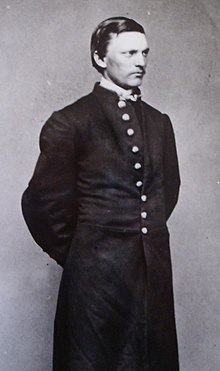 |
| Lt. Washington Augustus Roebling |
General S. WILLIAMS.
CULPEPER,
September 15, 1863-8.50 p.m.
Deserters and the current opinion of those I can get anything out of are positive that Longstreet's corps has gone to Richmond or farther south; that Ewell's and Hill's corps are about Orange Court-House, and General Lee is in command. Pleasonton reports Germanna Ford as the best place to cross. He says: "If you (I) were at the Rapidan Station now to occupy the attention of the enemy I believe I could effect a crossing below." I cannot move down there with safely, unless another corps moves out here.
From the best information I can get to-night, the enemy still hold this side of the Rapidan bridge, so I cannot have it reconstructed. The map indicates steeps banks on each side from that point down to Somerville Ford. The Clark's Mountain gives the enemy all the command, and I believe there is no command for our artillery till Germanna Ford is reached. There is a mill race on the other side, which gives the enemy's infantry shelter. It seems to me that the best way to turn the enemy is by a rapid move of troops toward Germanna or Ely's Fords.
General Pleasonton said he would report in full about the crossing to-night, but he has not yet done it. He says will you as General Meade to let me have the cavalry Kilpatrick and Gregg left behind on picket? We are very short-handed at this time. Lieutenant Gillespie has arrived. I will send both him and Lieutenant Roebling out to-morrow.
G. K. WARREN,
Major-General.
Official Records, Series I., Vol. 29, Part 1, Page 133.
In our modern age of spy satellites, aerial reconnaisance, and CNN it is incomprehensible an Army Corp could disappear without the enemy knowing of it. Yet the Union Army high command is not aware Longstreet has gone west. The have the idea he is not on the line of the Rappahannock, but the consensus of opinion is he has gone to Richmond. The young Lieutenant mentioned here, Roebling, was Washington Augustus Roebling, who after the war would gain fame as the builder of the Brooklyn Bridge.
No comments:
Post a Comment